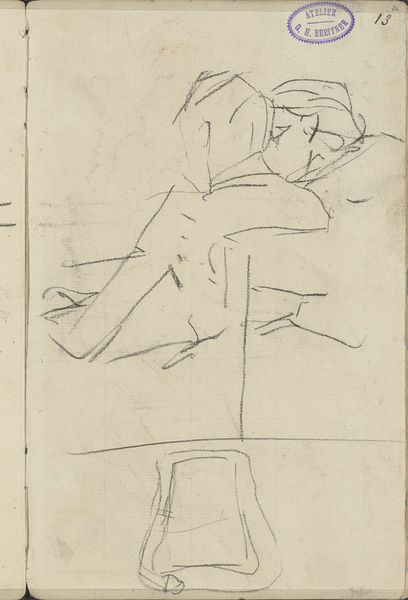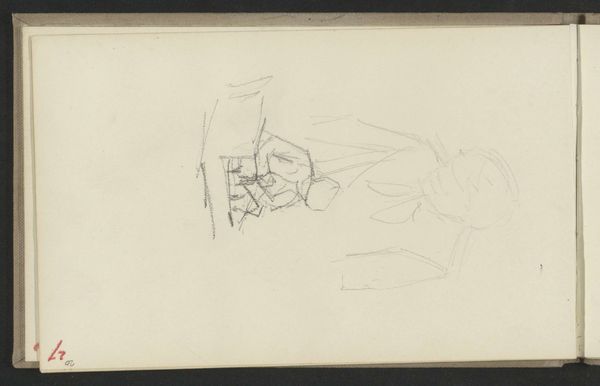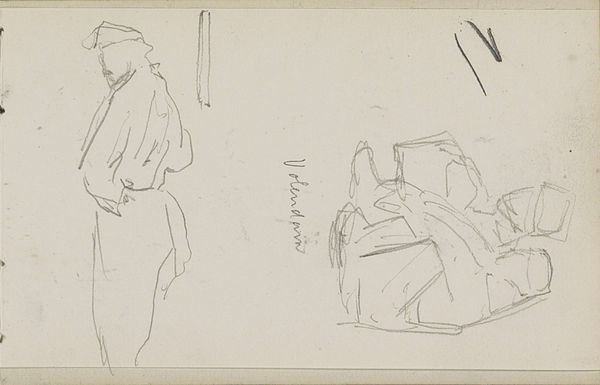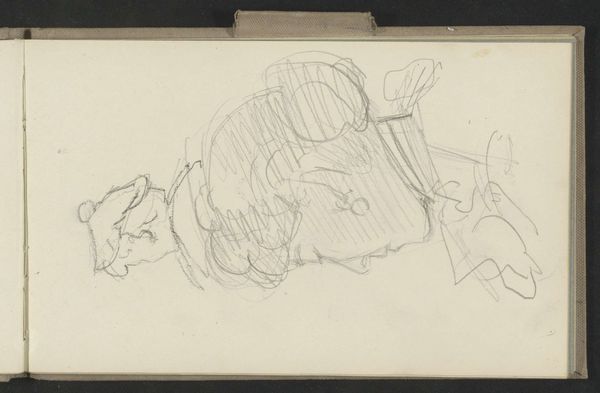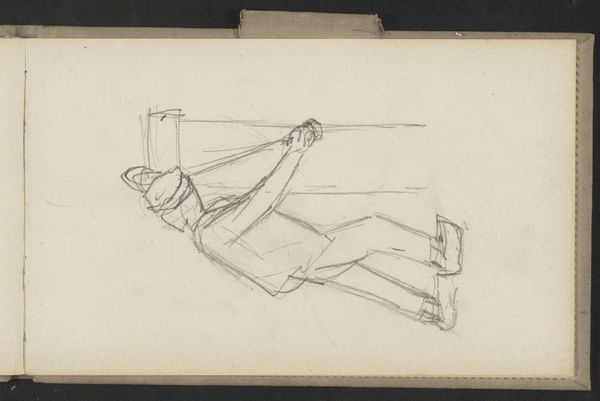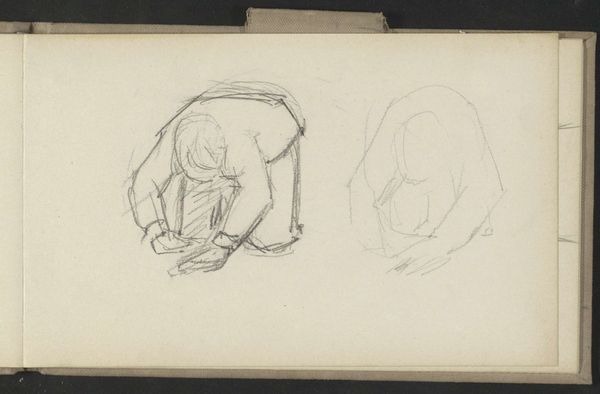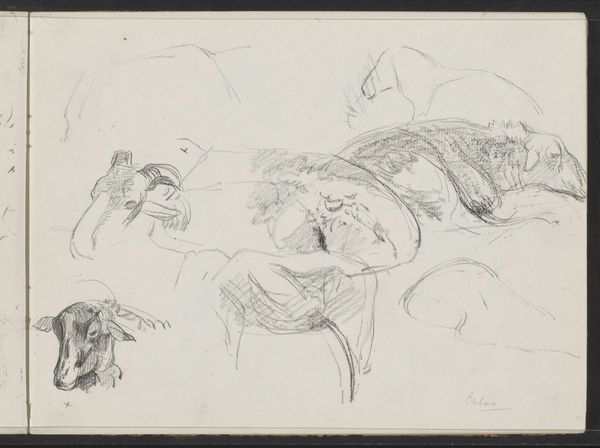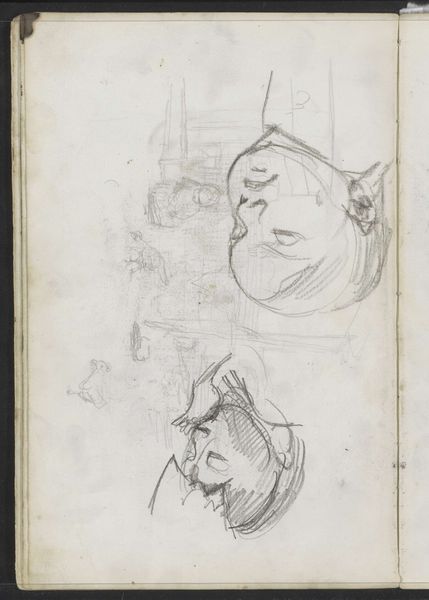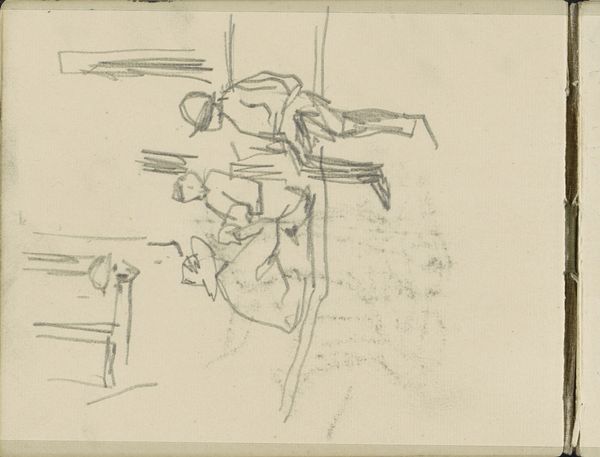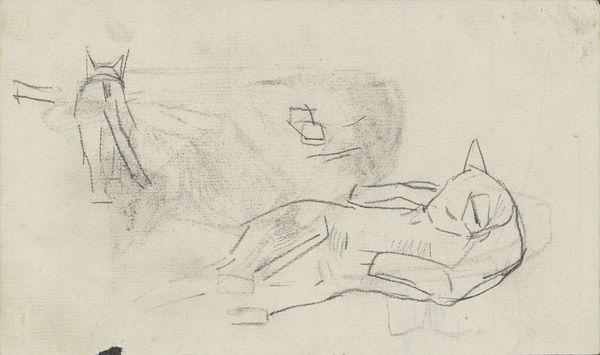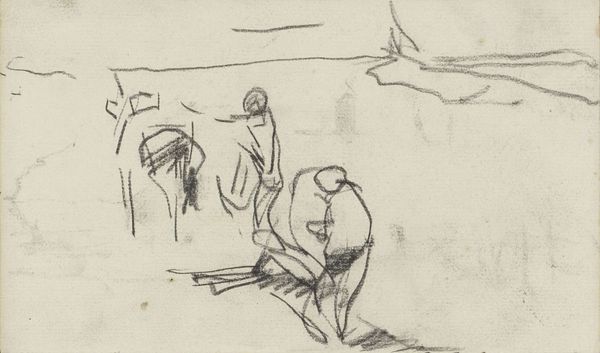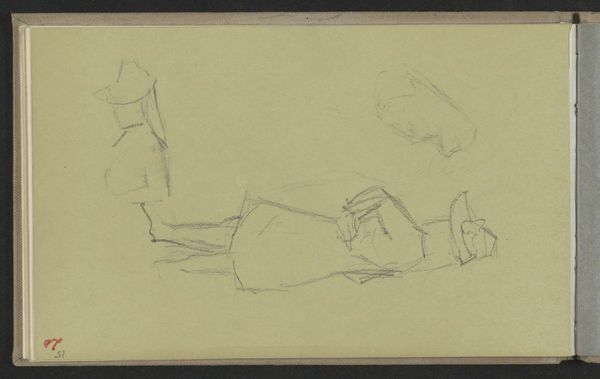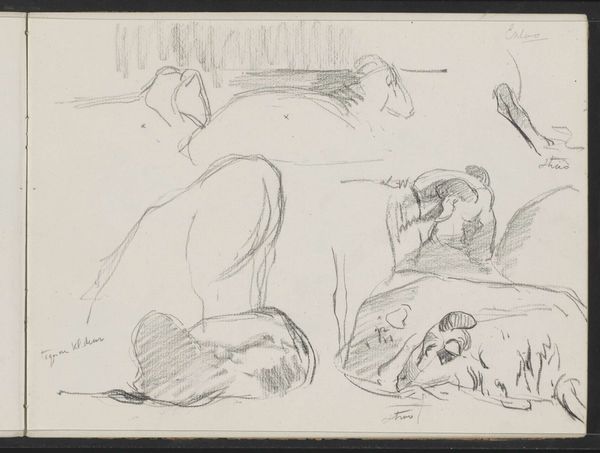
drawing, paper, pencil
#
portrait
#
drawing
#
paper
#
pencil
#
genre-painting
#
realism
Copyright: Rijks Museum: Open Domain
Curator: Jozef Israëls created this pencil drawing on paper, entitled "Bukkende man bij een bak, apen en katachtigen," sometime between 1834 and 1911. It’s currently housed right here at the Rijksmuseum. Editor: Wow, my first thought is...whimsical melancholy. Like a slightly dusty old sketchbook found in a forgotten attic. Curator: I appreciate that visceral reaction! Israëls was deeply engaged with Realism, aiming to depict everyday life. Given the era, it's worth considering how representations of class and the human relationship with animals reflect social hierarchies and power dynamics. What stories might be embedded in the sketch of this man and the creatures he keeps around him? Editor: Definitely feels like a peek into someone's private world. A man bending over a trough while these, dare I say, quirky monkeys and cat-like creatures observe. You almost feel like you’re intruding on a very personal moment, like finding a diary entry. Curator: Intrusion is key to Realism. By showcasing unvarnished realities, artists like Israëls pushed against idealised depictions prevalent in academic art. Furthermore, his identity as a Jewish artist might be crucial in our understanding of this work, informing how he perceived and portrayed marginalized subjects. Editor: I wonder what those creatures are thinking! Their poses are so full of character, like they're silently judging him for sloshing water everywhere! Curator: I would agree there. Beyond a literal depiction, consider the possible metaphors inherent in such a scene. What kind of social critique do you believe this is? What if, from the perspective of today, this art piece seems to echo broader historical themes of social and existential struggles, reflecting current discourse of equity and social justice? Editor: Food for thought! It reminds me that even the simplest sketch can carry the weight of the world. I wonder, if Israëls knew his little study here would someday spark conversations about society and equality? Curator: That is why, as Activists, we can see art, especially art from this era, as crucial for understanding past inequities and ongoing challenges. It invites us to contemplate power, privilege, and the continuing fight for social justice.
Comments
No comments
Be the first to comment and join the conversation on the ultimate creative platform.
